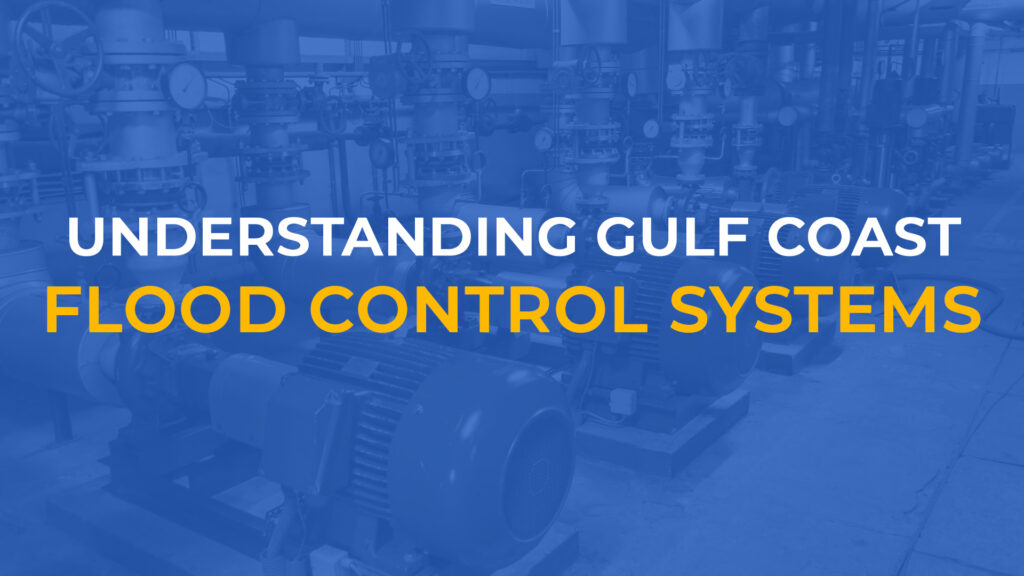Flooding poses significant challenges to communities, especially in regions like Houston and the Texas Gulf Coast. Implementing effective flood control systems is essential to mitigate the impact of heavy rainfall and storm surges. These systems comprise various components, including fiberglass basins, pumps, and retention ponds, each playing a vital role in managing excess water.
The Importance of Flood Control Systems
Flood control systems are designed to manage and redirect excess water, preventing it from inundating populated areas. In flood-prone regions, these systems are crucial for protecting infrastructure, property, and lives.
Key Components of Flood Control Systems
Fiberglass Basins
Fiberglass basins serve as collection points for excess water during heavy rainfall events. Constructed from durable, corrosion-resistant materials, these basins are designed to withstand harsh environmental conditions. They provide a reliable way to manage stormwater before it is pumped to retention ponds or drainage systems.
Pumps
Pumps are integral to flood control systems, responsible for moving collected water from basins to designated discharge points like retention ponds or drainage systems. High-capacity pumps ensure efficient water movement during heavy rainfall events, reducing the risk of urban flooding. Pumps used in flood control include:
- Submersible Pumps: Used to move water from collection points below ground level.
- Centrifugal Pumps: Ideal for high-volume water movement in large flood control projects.
- Grinder Pumps: Designed to handle debris and solids mixed with floodwaters.
Retention and Detention Ponds
Retention ponds are permanent bodies of water designed to hold stormwater and release it slowly, reducing peak runoff rates and preventing downstream flooding. Detention ponds temporarily store stormwater and release it at controlled rates, helping manage heavy rainfall in urban areas.
Stormwater Pump Stations
Stormwater pump stations are designed to handle significant volumes of water, especially during heavy rainfall events. These stations pump water to and from detention and retention ponds, ensuring efficient water management. Many modern pump stations come equipped with automated control systems that allow for real-time monitoring and adjustments.
Flood Statistics in Houston and the Texas Gulf Coast
The Texas Gulf Coast, including Houston, is particularly susceptible to flooding due to its flat terrain and proximity to the Gulf of Mexico. Over the past decade, the region has experienced an average of 10.7 days of flooding per year, compared to the national average of 6.8 days for coastal areas.
Historically, Harris County, which encompasses Houston, suffered through 16 major floods from 1836 to 1936, with some crests exceeding 40 feet, turning downtown Houston streets into raging rivers. The floods of 1929 and 1935 were particularly destructive, prompting the city to invest in long-term flood control measures.
More recently, Tropical Storm Imelda in 2019 brought catastrophic flooding to Southeast Texas, with some areas receiving over 40 inches of rain. This event resulted in widespread property damage and underscored the need for effective flood control systems.
Challenges in Flood Control
Implementing effective flood control systems involves several challenges:
- Urbanization: Increased development reduces natural land that can absorb rainfall, leading to higher runoff and potential flooding.
- Aging Infrastructure: Existing drainage systems may be outdated and unable to handle current rainfall intensities, necessitating upgrades.
- Complex Weather Systems: Changing weather patterns can lead to more frequent and intense storms, increasing the risk of flooding.
Strategies for Effective Flood Control
To address these challenges, several strategies can be implemented:
- Upgrading Infrastructure: Modernizing drainage systems to handle higher volumes of water can reduce flooding risks.
- Implementing Green Infrastructure: Incorporating green spaces and permeable surfaces can enhance water absorption and reduce runoff.
- Community Engagement: Educating residents about flood risks and involving them in planning can lead to more effective solutions.
Why Choose Gulf Coast Pump & Supply for Flood Control Solutions
Gulf Coast Pump & Supply is more than a distributor—we’re a partner in building effective, long-lasting water management systems. With over 60 years of experience in the pump and supply industry, we understand the unique needs of municipalities, developers, and engineers working to mitigate flood risk.
What Sets Us Apart
- Proven Experience: Our decades of service give us the practical knowledge needed to recommend the right equipment for any environment.
- Extensive Inventory: We keep a wide range of pumps, components, and accessories in stock to minimize downtime and expedite projects.
- Custom Solutions: We build and deliver custom pump stations, filtration screens, and flood control packages tailored to your site requirements.
- Trusted Brands: We work with the best in the business for all applications. Brands like Ashland Pump, FloFab, and Franklin Electric, ensure every system meets the highest standards.
- Hands-On Support: Our team of knowledgeable consultants offers detailed guidance from design through installation, helping you anticipate challenges and streamline setup.
When municipalities across Texas need dependable, engineered solutions for high-volume stormwater management, they turn to Gulf Coast Pump & Supply. Our focus on quality, speed, and real-world results makes us a reliable choice for projects of all sizes.
Find the Right Flood Control Solutions with Gulf Coast Pump & Supply
Flooding is an ongoing challenge, but with the right systems in place, municipalities and businesses can reduce risks and protect their communities. Gulf Coast Pump & Supply provides fiberglass basins, flood control pumps, and custom-engineered water management solutions designed to keep flood-prone areas safe.

